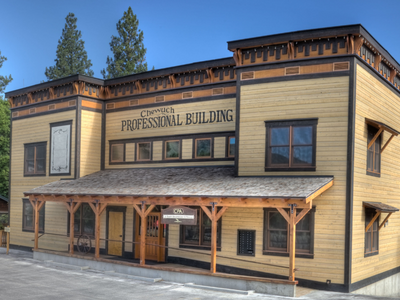
Wood siding has been a popular choice for homeowners and contractors for centuries, thanks to its natural beauty, warmth, and durability. When properly installed and maintained, wood siding can last for decades, protecting your home and enhancing its curb appeal. In this comprehensive guide, we’ll cover the essential steps for proper installation and maintenance of wood siding to ensure longevity and optimal performance.
- Selecting the Right Wood Siding Material
The first step in any wood siding project is selecting the right material. There are various wood species available, each with its unique characteristics, durability, and appearance. Some popular choices include red cedar, yellow cedar, douglas fir and pine. When choosing wood siding, consider factors such as climate, budget, and desired aesthetics. Opt for wood species that are naturally resistant to rot and insects, and look for siding materials that have been treated or pre-primed for added protection.
- Preparing the Job Site
Before starting the installation process, it’s crucial to prepare the job site. Remove any existing siding and inspect the sheathing for damage or signs of moisture. Replace any damaged sheathing and ensure that the surface is clean, dry, and free from debris. Install a moisture-resistant barrier, such as house wrap or felt paper, over the sheathing to prevent moisture from penetrating the wood siding. This barrier should overlap at the seams and be properly secured with staples or nails.
- Proper Siding Installation Techniques
Proper installation is essential to the longevity and performance of wood siding. Follow these best practices to ensure a successful project:
a. Layout and Spacing: Begin by snapping chalk lines to mark the location of each siding course. This will help ensure that your siding is level and evenly spaced. Make sure to leave a small gap between the siding and corner boards to allow for expansion and contraction.
b. Cutting and Fastening: Use a circular saw or miter saw to cut the wood siding to size, and make sure to prime or seal all cut edges before installation. Fasten the siding using corrosion-resistant nails, such as stainless steel or hot-dipped galvanized nails. Drive nails through the siding and into the sheathing, leaving a slight gap to allow for expansion and contraction. Avoid over-nailing, as this can cause the wood to split or buckle.
c. Overlapping and Flashing: When installing horizontal siding, overlap each board by at least 1 inch to create a weather-resistant barrier. For vertical siding, use proper flashing at the corners and joints to prevent moisture infiltration.
d. Ventilation and Drainage: Ensure that there is adequate ventilation and drainage behind the siding, particularly at the bottom of the wall. This can be achieved by installing furring strips or a rain screen system, which creates a gap between the siding and sheathing, allowing air to circulate and moisture to escape.
- Routine Maintenance for Wood Siding
Regular maintenance is crucial to preserving the beauty and durability of wood siding. Here are some essential maintenance tasks to keep your client’s siding in top shape:
a. Cleaning: Periodically clean the siding using a soft-bristle brush and a mild detergent solution. This will help remove dirt, mildew, and algae, which can cause discoloration and damage over time. Avoid using a pressure washer, as this can damage the wood’s surface and force water behind the siding.
b. Inspecting and Repairing: Inspect the siding annually for signs of damage, such as cracked or split boards, loose nails, or peeling paint. Replace damaged boards and refasten any loose nails to ensure proper performance. Seal any gaps or cracks with a high-quality, paintable caulk.
c. Painting and Staining: Wood siding requires regular painting or staining to maintain its appearance and protect it from the elements. Depending on the type of finish and local climate, this may need to be done every 3-7 years. Before applying a new coat of paint or stain, thoroughly clean the siding and remove any loose or peeling finish using a scraper or sander. Apply a high-quality primer, followed by a topcoat of paint or stain that is specifically designed for exterior wood siding. Be sure to follow the manufacturer’s recommendations for application and drying times.
d. Pest Control: Keep an eye out for signs of insect infestation or woodpecker damage. If you notice any issues, address them promptly by consulting a pest control professional or taking appropriate measures to deter woodpeckers, such as installing visual deterrents or providing alternative nesting sites.
e. Trim and Gutter Maintenance: Ensure that gutters and downspouts are clean and functioning correctly to prevent water from pooling around the foundation or splashing onto the siding. Keep vegetation trimmed back from the siding to improve air circulation and reduce the risk of moisture buildup and pest infestations.
Wood siding is a timeless and attractive option for residential homes, offering warmth, character, and durability. By following proper installation techniques and committing to regular maintenance, you can ensure that your client’s wood siding remains beautiful and functional for many years to come. Your attention to detail and dedication to quality will make a lasting impression on your clients and contribute to the success of your projects.

